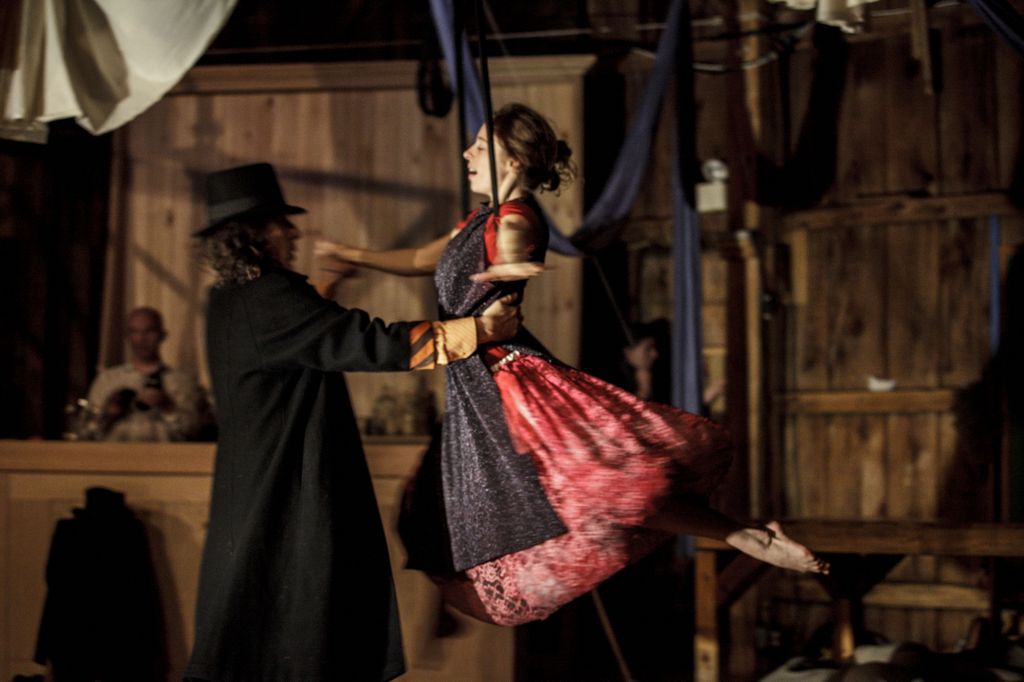
by Lauren Warnecke, MS
So you’ve managed to make a dance. How do you know when it’s really finished? When your music runs out? After about 20 minutes? When you run out of “moves”?
Rule number one in finishing a dance is a narrative arch. This doesn’t necessarily mean you have to tell a linear story, but each dance must have a clear beginning, middle, and end. Where you choose to place arches within these sections is largely up to you, but they are important for guiding your audience along the journey.
Once your journey is up, so is your dance, but choreographers often find themselves dissatisfied and wondering if the dance is, in fact, finished. The Grand Parade, created and performed by Double Edge Theatre at The Dance Center of Columbia College last Saturday is a piece with a strong narrative and massive production elements that include a fury of projections, mannequins, rigging for aerial circus arts, and perhaps a few hundred props. Yet, even with all these things going on, Double Edge’s history of the 20th Century in 55 minutes is a work they insist is not yet done. Seeing The Grand Parade reinforced my view that no work is ever, really, done.
A colleague of mine once said of her work, “It’s not done, but I’m done with it.” She viewed a performance as a slightly more formal Works-in-Progress showing… with fancier lights.
I think her point speaks to the idea that dance is a living, evolving art form. Dances have a transient nature that is unlike, say, visual art. The Sistine Chapel will always be the Sistine Chapel, but Peptipa’s choreography will be ever changing to a certain degree based on the venue, the dancers, tempo choices, costume, etc.
On a more contemporary note, sometimes it is only through live performance that you truly learn about a piece and see what it needs. You might figure out that your ending is really awkward and the audience doesn’t know when to clap. Or you might discover that you want the whole thing to be presented in reverse order to what it is. The stage is a beautiful place to discover these things, but that’s not to say that everything is stage-worthy…
Ultimately, you’re asking patrons to pay money to watch your product. Most people wouldn’t fork over $12 to see an unfinished movie, and besides, that’s what free or inexpensive WIPs are for. But given the inevitable stages of development a dance undergoes, it may need to be presented multiple times, in multiple iterations. Each iteration that takes to the stage, however, should a finished quality that is worth paying for. These are a few things I look for in a “finished” dance: [Read more…]




